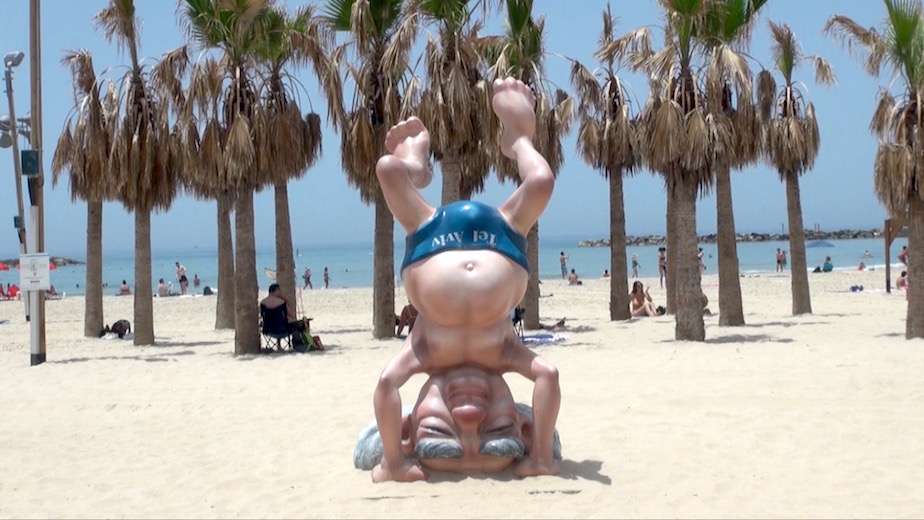Wadi Rum – Desert Adventures
Wadi Rum is a spectacularly scenic desert valley in southern Jordan.
This area of Jordan is quite isolated and largely inhospitable to settled life. The only permanent inhabitants are several thousand Bedouin nomads and villagers. There is no real infrastructure, leaving the area quite unspoilt. Apart from the Bedouin goat hair tents, the only structures are a few concrete shops and houses and the fort headquarters of the Desert Patrol Corps.
T E Lawrence (of Arabia) spent a significant amount of time here during the course of the British-inspired Arab Revolt against the Ottoman Empire during the First World War (1914-1918). Fans of the 1962 film Lawrence of Arabia will be familiar with the landscape, which is not so much sand dunes as it is a mass of soaring cliffs and sandstone and granite mountains (jebel in Arabic).
Wadi Rum is a short detour from the Desert Highway between Amman and Aqaba. A side road leads to the entrance where you will find the Wadi Rum Visitors Centre, a police office and a lot of potential guides offering camel and 4×4 treks. The cost to enter the Wadi Rum Protected Area is JOD5 per person as of Feb 2014. You haven’t actually visited Wadi Rum unless you paid your entrance to the visitor centre, or you would have been scammed if you didn’t.
Private vehicles are prohibited past of the village of Wadi Rum. If you want to experience the grandeur that the Wadi has to offer, you will need to hire a guided camel or 4-wheel-drive tour. The costs may vary based on the guide, the length of the trip, and your willingness and ability to bargain. You’d get the best price by contacting the local Bedouin directly.
See
- Lawrence’s House: Nobody is certain that this was Lawrence’s house, although there are stories that he both stayed and/or stored weapons here. The current structure is built upon the remains of a Nabataean building, however, and it’s another beautiful spot in the desert. The house itself is a bunch of rubble, though, and not very impressive.
- Lawrence’s Spring: Just 2 km (1.2 miles) south-west of the village of Rum. The spring is at the top of a short scramble – head for the fig tree! Although the pool itself is largely unprepossessing, being a stagnant puddle, the views across the desert are truly spectacular.
- The Nabataean Temple: Near the Rest House in Rum Village. The surrounding area is covered in Thamudic and Kufic rock art.
- The Anfashieh Inscriptions: Not far from the red Sand Dune area this mountain has depictions of a camel caravan from the Nabatean and Thaumadic period.
- Burdah Rock Bridge: On many tours, you only view this from a distance, but it is possible to climb up to this rock bridge if you have a guide and a reasonable level of fitness.
- Umm Fruth Rock Bridge: A lower rock bridge which is featured on many tours and can be easily scrambled onto.
- Red Sand Dunes: There are various places in Wadi Rum where the white and red sands meet, but the most commonly visited is a dune sloping up alongside a jebel – a bit tough to climb up, great fun to run down! It can be difficult to ascending those – use small steps.
- Seven Pillars of Wisdom: Although most people can only count five, this is an impressive rock formation near the Visitor’s centre. It is named after T E Lawrence’s book – not the other way around!
- Jebel Khaz’ali: This narrow canyon contains numerous Nabataean rock carvings of people and animals. Beautiful.
The genuine attraction of Wadi Rum is the desert itself, best seen by four-wheel drive or on a camel. Some visitors only spend a few hours in the Wadi, but it’s definitely worth staying overnight in Bedouin camps in the desert.
The quality 4-wheel-drive tour depends on Bedouin driver who serves as a guide, but often do not have much knowledge and poor English. Therefore picking up a guide at the gate is a hit and miss affair and many of the best guides rely mainly on advance bookings. Many of the guides have websites, through which you can arrange your tour.
Many camps will provide traditional Bedouin meals. One speciality is chicken or goat cooked under the desert sand, generically known as “zarb” in the same way as we might say “a roast”. This has a barbecue flavour, but is very moist and falls off of the bone: try to be nearby when they unearth it as the smell released is gorgeous! You won’t be able to avoid the Bedouin tea, which is almost forcibly served in every tent you will visit. It’s hot, very sweet and usually flavoured with mint and/or sage. It’s surprisingly refreshing on a hot day and you may develop a slight addiction to it.
There are several camping options, from more formal camp ground to riding out into the desert with a Bedouin guide and staying in a traditional Bedouin tent.
Rum Stars. Camping in a real, permanent Bedouin Camp in the shade of a “humbling” cliff face, complete with proper toilets and a shower block. Perfect location for watching the sunrise just outside the camp itself, and a short walk across to the other side of the valley to watch the sunset from atop a mighty dune. They also offer Jeep tours into the Wadi Rum Protected Area, Trekking and scrambling with local Bedouin guides, and Camel Trekking with real experienced Bedouin guides – ideal for a ride back to the village from the camp (2-3 hours by camel).









